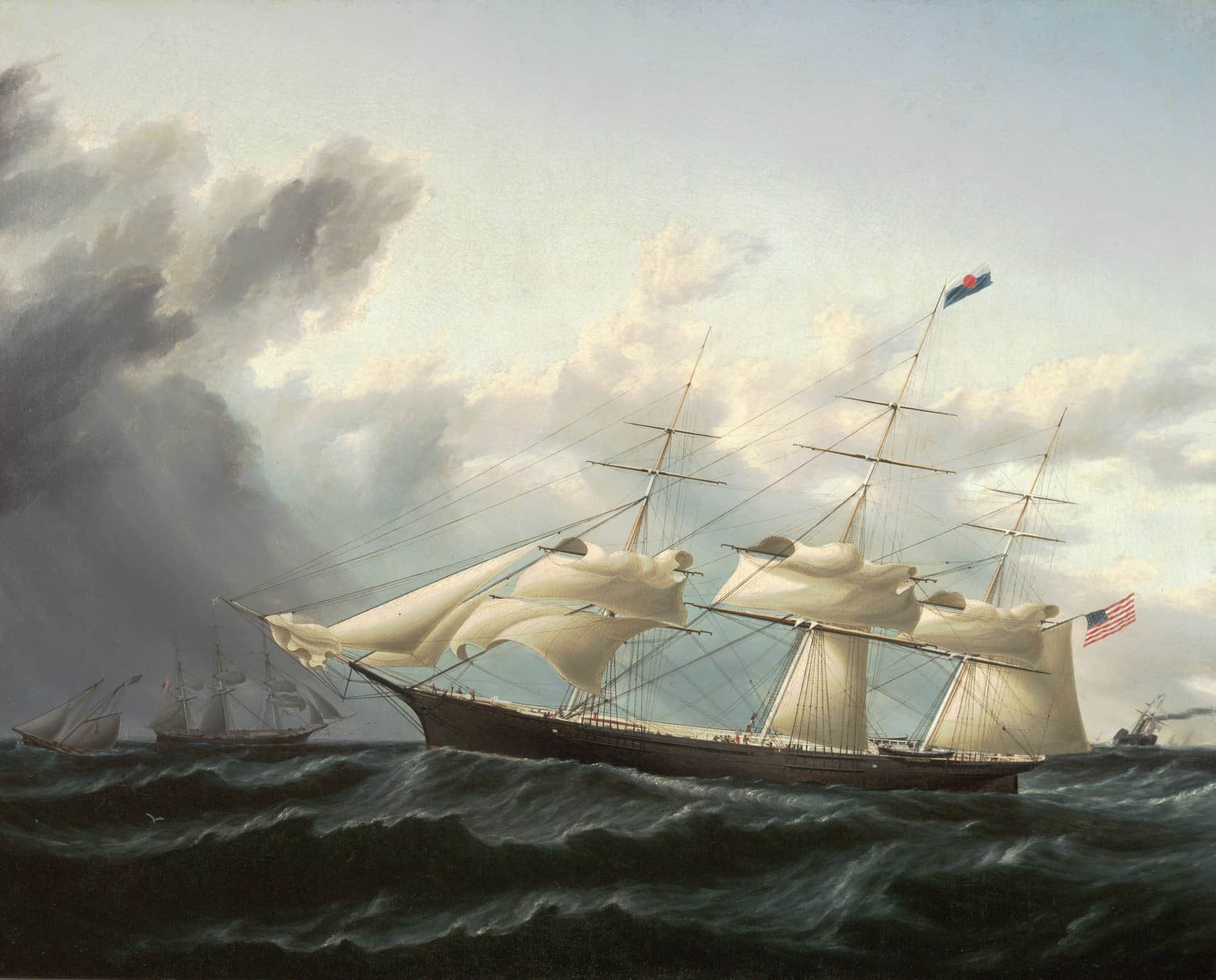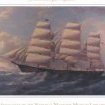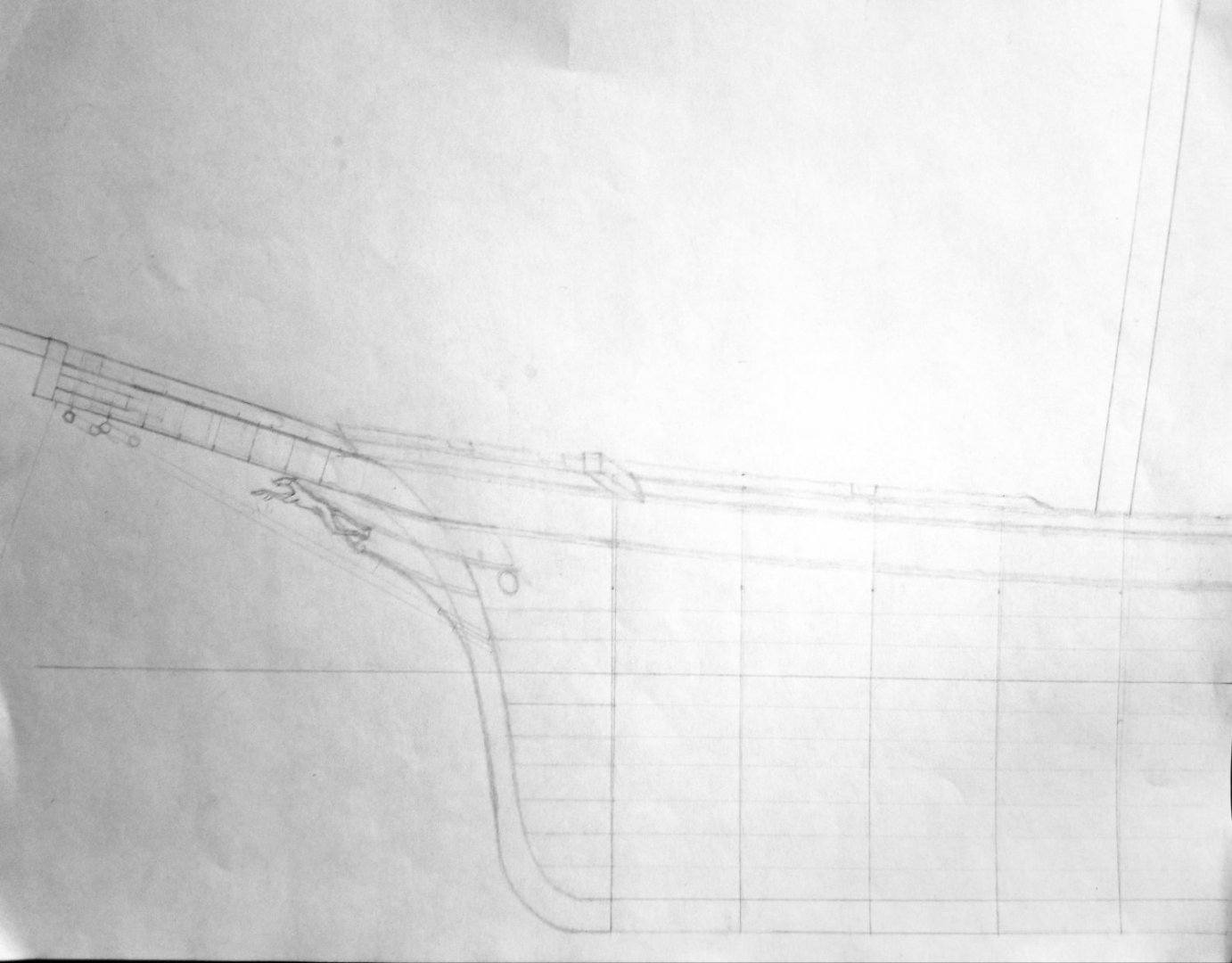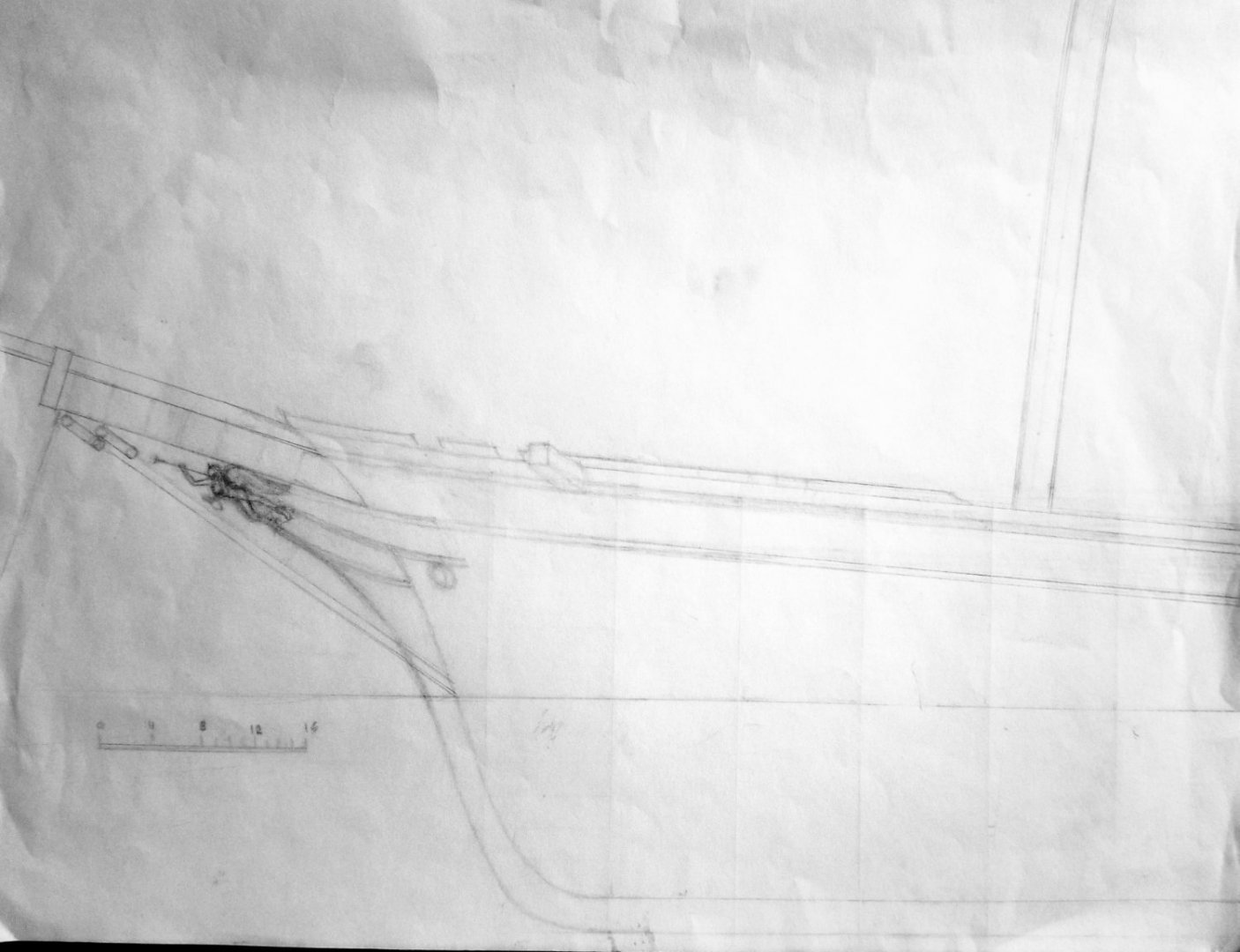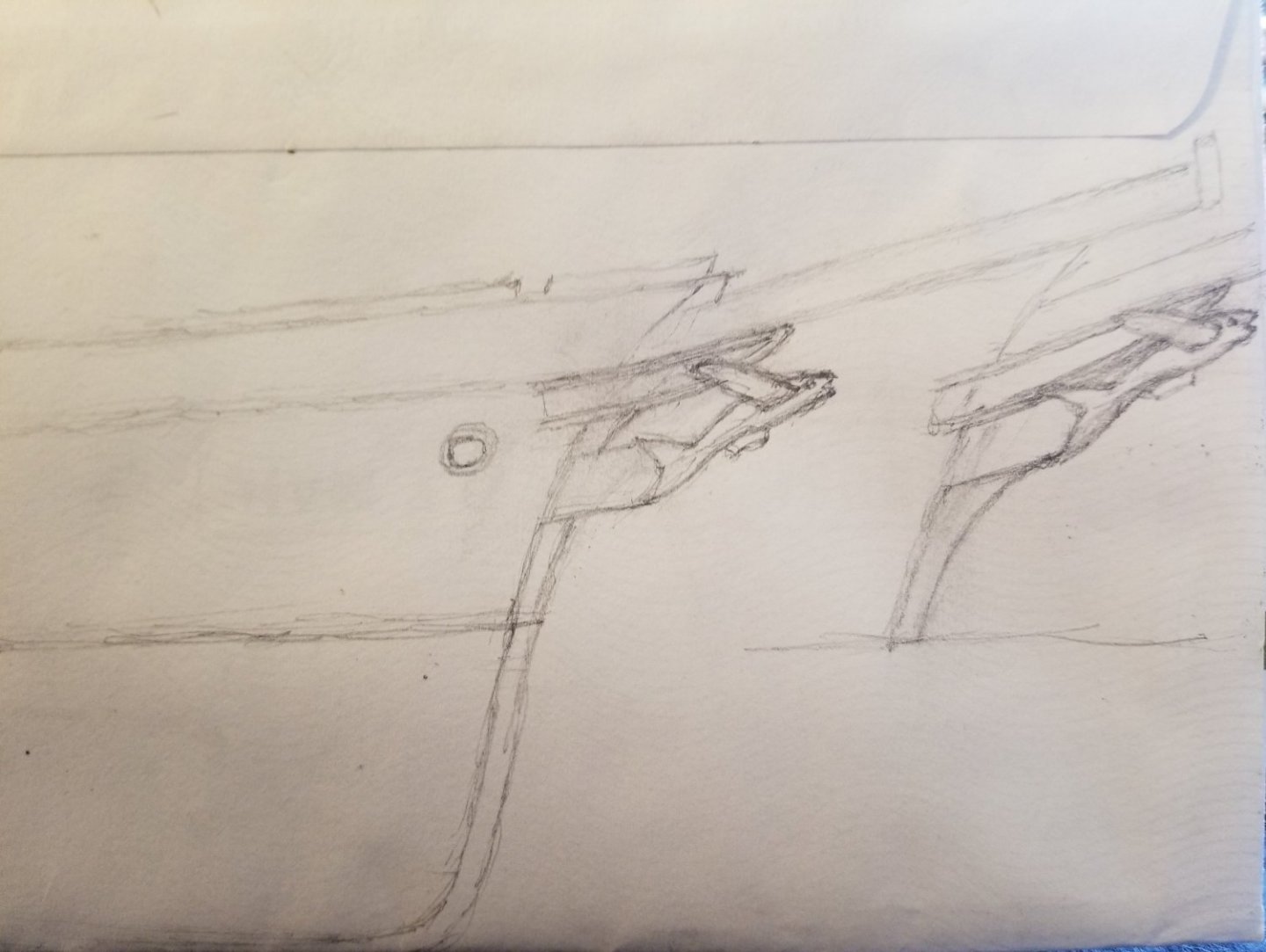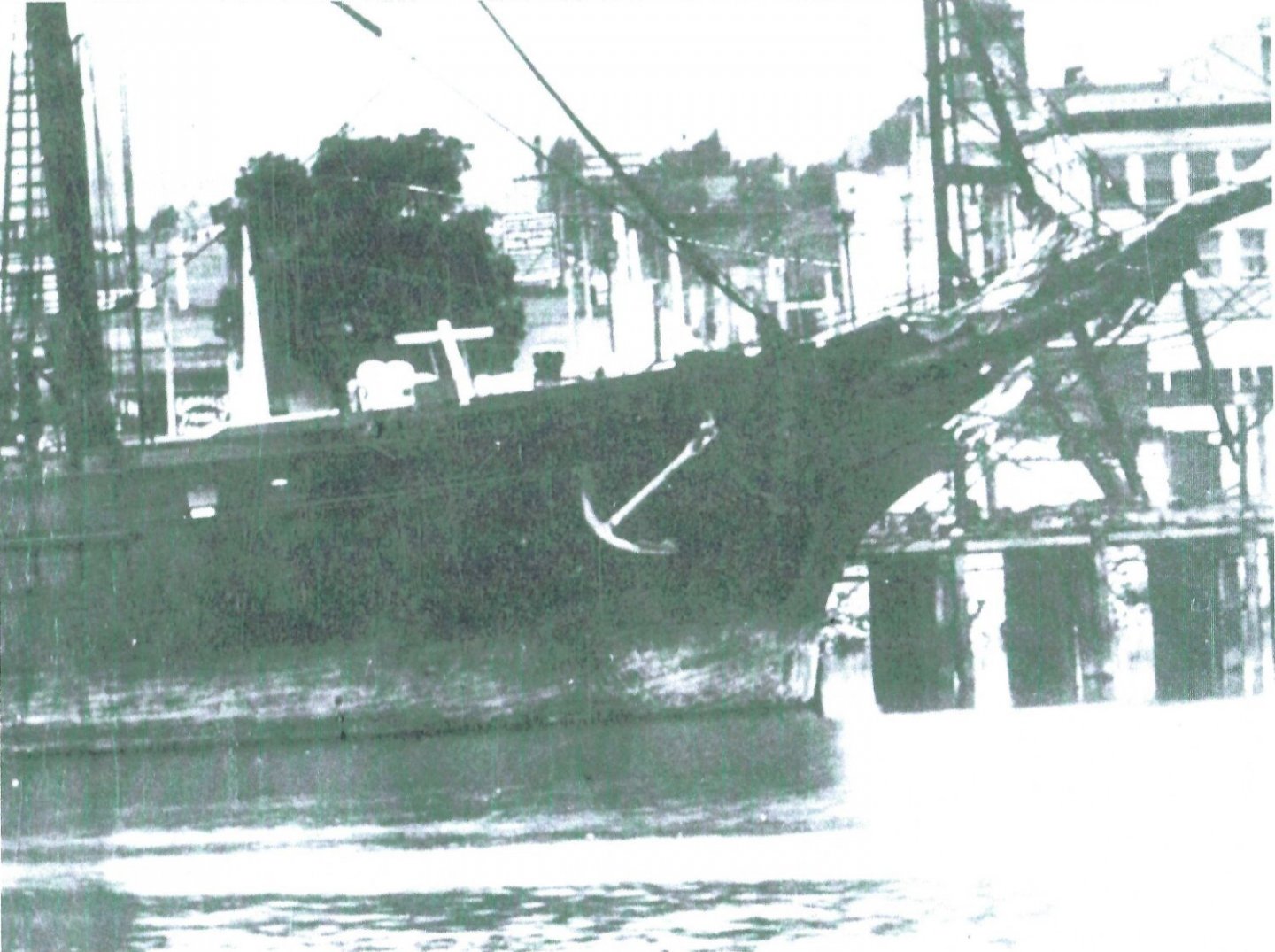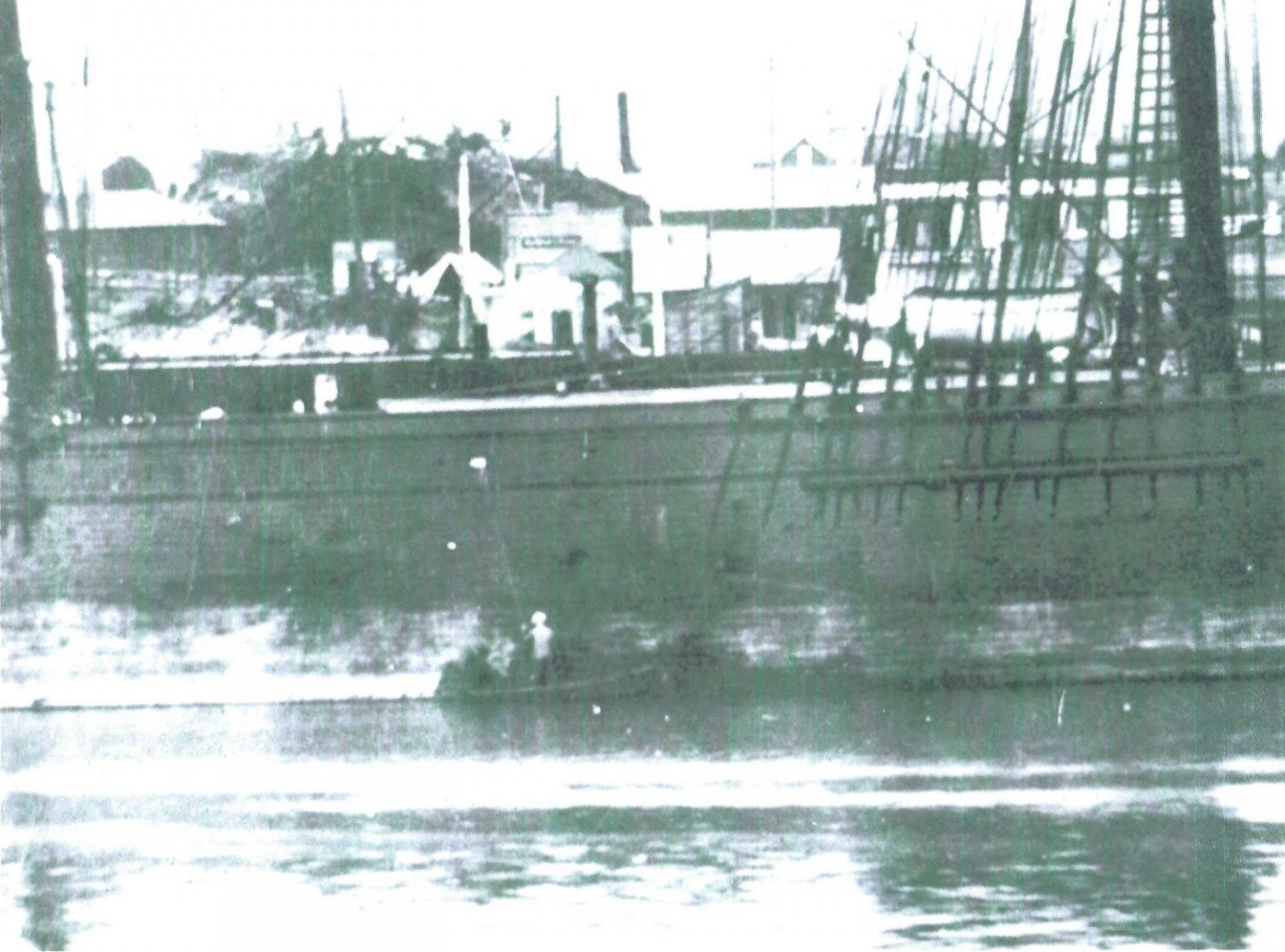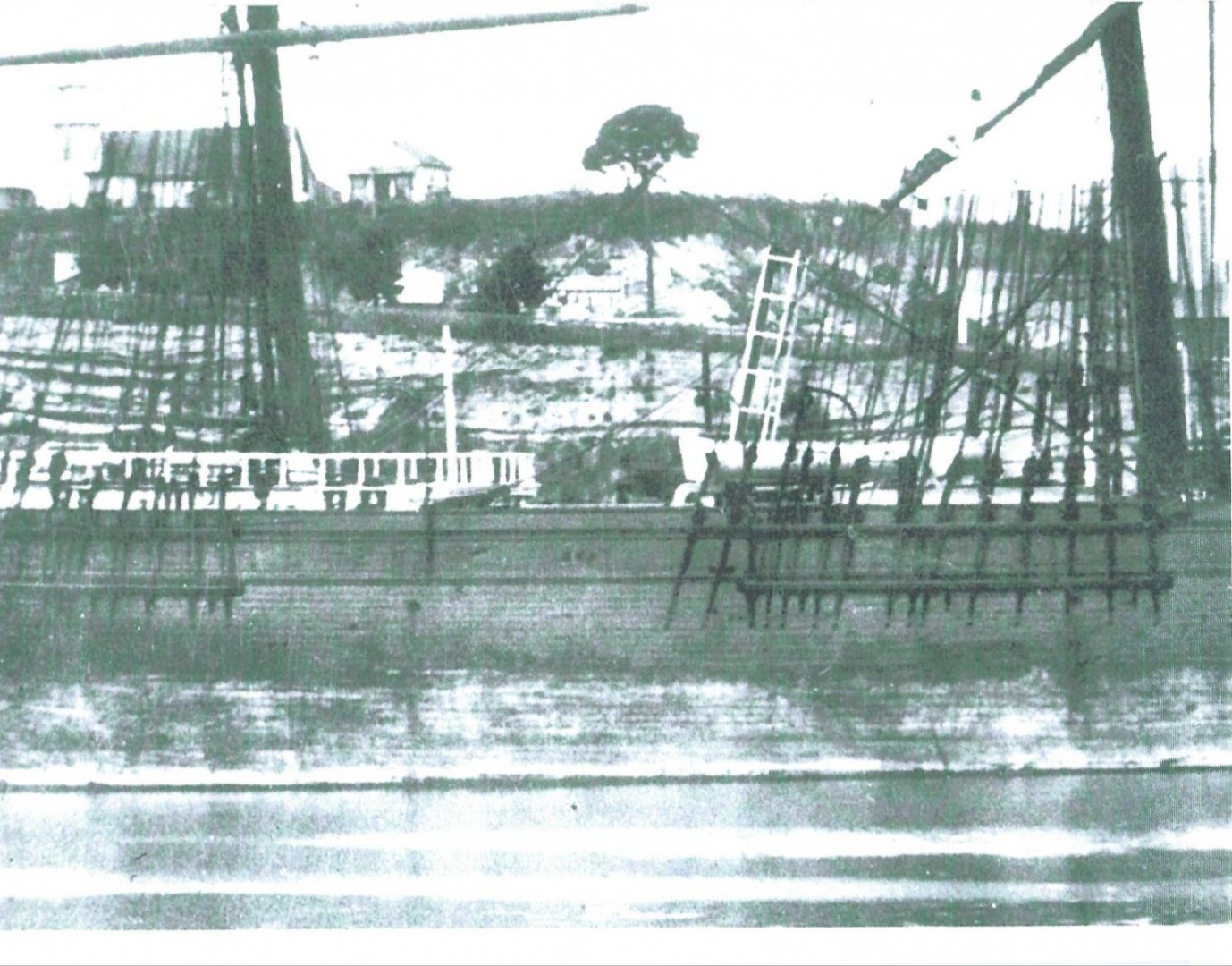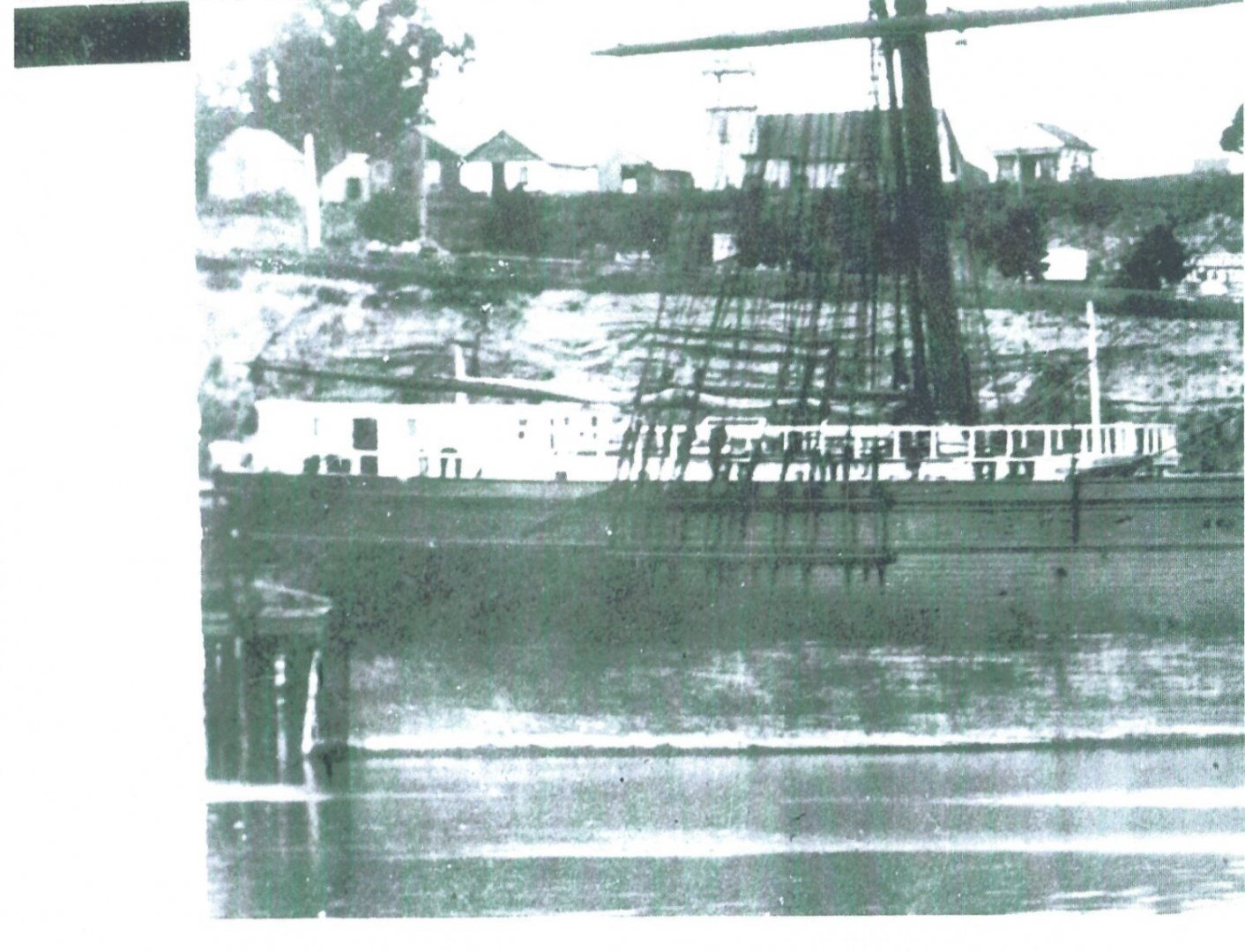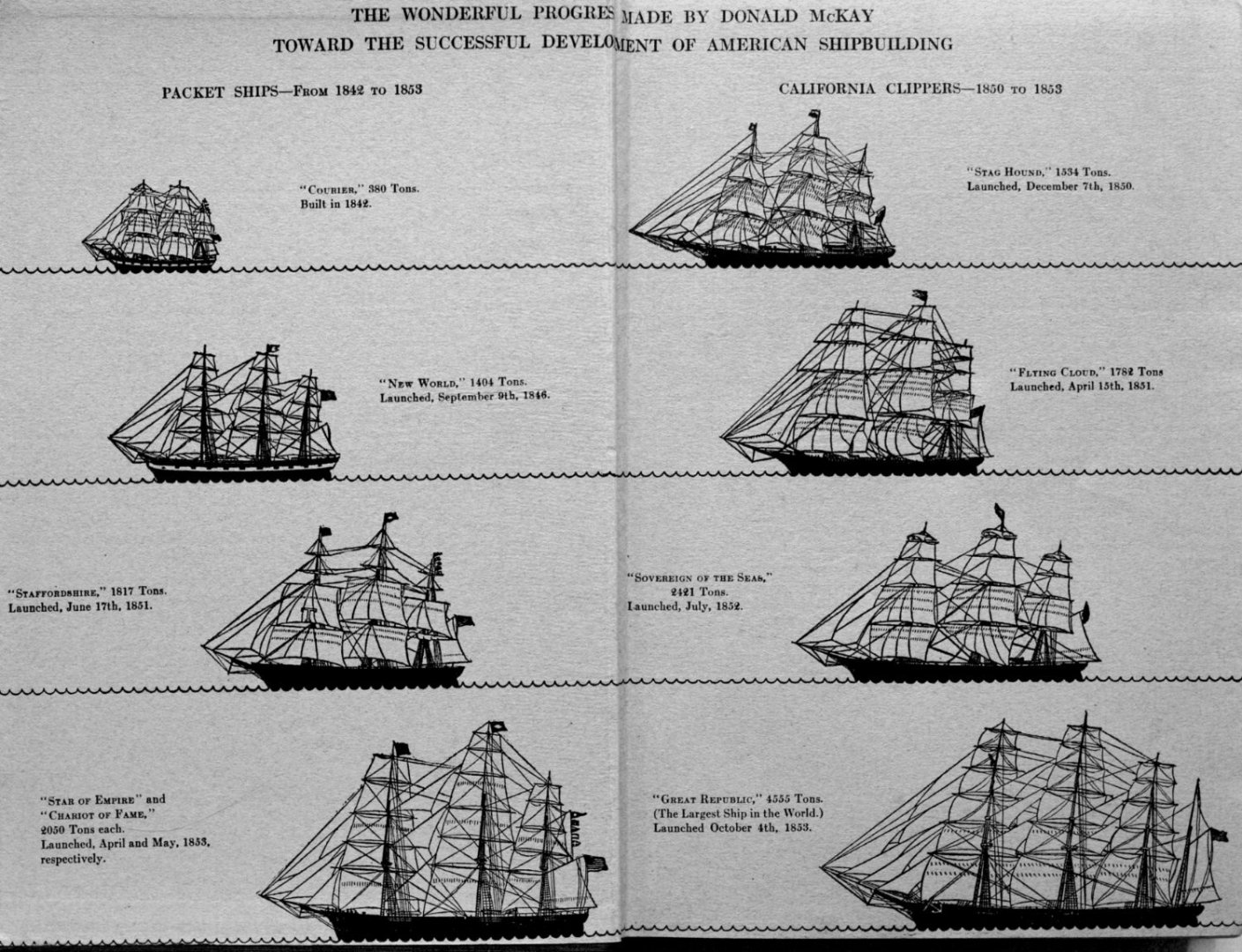-
Posts
2,171 -
Joined
-
Last visited
Content Type
Profiles
Forums
Gallery
Events
Everything posted by ClipperFan
-
George K, here's a couple illustrations of Donald McKay's first two Extreme Clippers: "Staghound" and the famous "Flying Cloud." If you look closely at "Staghound" underneath lines of the Naval Hoods and Cutwater the Stem is still visible. Incidentally both vessels are in the same exact scale. By the way, there never has been an accurate model of "Flying Cloud" including a 1/3rd scale vessel built in the '70s by the same shipwrights of Nova Scotia which built the famous HMS "Bounty" replica. Yet if you look carefully at the first illustrations of "Flying Cloud" both at her launch and advertisements from her at dockside, her Naval Hoods and Cutwater are illustrated. It's crude but they're definitely there.
- 602 replies
-
- Flying Fish
- Model Shipways
-
(and 2 more)
Tagged with:
-
George K, yes that's absolutely right. If you look at Clipper Ships, typically their Cutwaters extend beyond the Stem. What's been so sad for McKay's Clippers is that nobody has bothered to properly incorporate the Cutwaters & Naval Hoods into their models, even though they're described in contemporary descriptions. If you look at photos of "GLORY of the SEAS" these nautical devices can all be clearly seen. Even the Scottish Clipper "Cutty Sark" has these devices. Once you've added this gracefully curving component and blended it into the bow, you'll see how your "Flying Fish" bow will more closely mirror the one in the Buttersworth painting.
- 602 replies
-
- Flying Fish
- Model Shipways
-
(and 2 more)
Tagged with:
-
George K, nice work on representing the Naval Hoods, Cutwater & more lifelike figurehead on your "Flying Fish". I hope you don't mind a couple suggestions how to recapture a Clipper Bow. If you can, move the Cutwater up so it abuts the bottom of the Naval Hoods & extend it just enough so the fish figurehead is further up closer to the tip of the Naval Hoods. Then add the curved piece blending into the bottom of the Cutwater. I've attached a before & after sketch to show end results. Good luck!
- 602 replies
-
- Flying Fish
- Model Shipways
-
(and 2 more)
Tagged with:
-
Vladimir, actually Glory did in fact originally carry a full set of Stuns'ls. By 1877 when Rob is modeling her, apparently those booms had been removed.
- 3,560 replies
-
- clipper
- hull model
-
(and 2 more)
Tagged with:
-
George K, Rob's correct. I misread your question. All images of Glory appear to show large single iron bars, not slimmer doubles like the Morgan's. For the much larger Clipper Ships with far more substantial demands on their rigs, the more stout single wrought iron bars would be far more suitable.
- 602 replies
-
- Flying Fish
- Model Shipways
-
(and 2 more)
Tagged with:
-
George K, from the sharp, historic close up images Michael Mjelde has shared with us, it appears to me at least that these were wrought iron similar to those on the Morgan (Rob can also share his observations). Here are two very good sets of images of Glory which appear to confirm this.
- 602 replies
-
- Flying Fish
- Model Shipways
-
(and 2 more)
Tagged with:
-
George K, construction of these built masts is fascinating to observe. For what it's worth, details of original paint scheme for "Flying Fish" describe lower masts painted white, yards black and booms bright, which matches the Buttersworth painting.
- 602 replies
-
- Flying Fish
- Model Shipways
-
(and 2 more)
Tagged with:
-
Rob, thanks for the update on your progress. It won't be long before we're seeing yard arms too. It's still so uncanny how much your model mimics images of the actual vessel herself.
- 3,560 replies
-
- clipper
- hull model
-
(and 2 more)
Tagged with:
-
Vladimir, wow, my but that's an impressive Starboard Broadside of your Glory! I welcome your new found commitment to fully masting and rigging your model. Rob is demonstrating how the true beauty of these magnificent Clippers is in their harmonizing of beautiful hulls with spectacular sets of sails. I believe yours being at a much larger scale will look even more lofty with a full suit of sails. Welcome back!
- 3,560 replies
-
- clipper
- hull model
-
(and 2 more)
Tagged with:
-
Rob, I meant no critique of your unique approach to recreating McKay's Clippers by heavily modifying Revell's excellent "Cutty Sark" model. For one thing, you were the only one even attempting to build "Glory of the Seas". That project is what initially gained my attention. I really admire the dramatic seascape of your "Donald McKay" and hope you complete that effort some day. Meanwhile your Glory is more and more resembling the magnificent profile of her docked at San Francisco in 1877. Her spectacular masts really match her impressive Hull. It's beginning to show exactly why Glory was so popular when she sailed into sight.
- 3,560 replies
-
- clipper
- hull model
-
(and 2 more)
Tagged with:
-
Rob, while I was intrigued with your imaginative approach to modifying. "Cutty Sark" hulls to recreate McKay Clippers (a process which admittedly has its limitations due to the substantial differences between UK and American hulls) it was your scratch build of "Great Republic" which really impressed me with your in depth modeling skills. You outdid yourself with the GR and GS now appears to be surpassing even that magnificent creation.
- 3,560 replies
-
- clipper
- hull model
-
(and 2 more)
Tagged with:
-
Rob, it's great to see you back in action. I can never get enough of your impressively beautiful model. Keith, now that we realize how substantial "GLORY of the SEAS" was, she would have been dwarfed by the "Great Republic." It's hard to fully visualize this but since we're all familiar with football fields, GR would have been practically 112 yards long! Imagine walking the decks of a floating football field....
- 3,560 replies
-
- clipper
- hull model
-
(and 2 more)
Tagged with:
-
Vladimir, the places I know are the Peabody-Essex Museum, Salem, MA; USS Constitution "Old Ironsides" Museum, Boston, MA; South Street Seaport, Lower Manhattan, NY; Mystic Seaport Museum, Mystic, CT & the J Russell Jinishian Nautical Art Gallery, Stonington, CT (not technically a museum but the owner actually created and curated the Mystic Art Gallery and might know one or more Museum contacts. I'll let you know what I find out.
- 3,560 replies
-
- clipper
- hull model
-
(and 2 more)
Tagged with:
-
Jared, really nice work and great detailed description of your process to create these beautifully realized deck structures.
- 431 replies
-
- Flying Fish
- Model Shipways
-
(and 2 more)
Tagged with:
-
Rob, that's a very nice display plaque. It's quite reminiscent of a 2 page display in "Some Famous Sailing Ships & Their Builder Donald McKay". Key difference is your inclusion of non McKay vessels. On left are depicted evolution of McKay's Packet Ships while on the right are his progressive examples of his California Clipper Ships.
- 3,560 replies
-
- clipper
- hull model
-
(and 2 more)
Tagged with:
-
"Great Republic" as originally launched was 335' long with a 53' beam while "GLORY of the SEAS" was 265' long with a 44' beam. At 1:96th scale, Glory would be 9" shorter and 9 " narrower as well. Both models would be impressive at 33" for Glory and 42" for Republic, just counting hull length alone. I always thought it would be an exciting display to see a great number of McKay's vessels all constructed in meticulous detail at the identical scale. Interestingly, McKay's gargantuan Clipper "Donald McKay actually eclipsed the rebuilt "Great Republic" in carrying capacity, making her the largest ship in the world back then.
- 3,560 replies
-
- clipper
- hull model
-
(and 2 more)
Tagged with:
-
Rob, thanks for sharing some waterline equal views with us. As I suspected, mammoth "GLORY of the SEAS" in fact does dwarf "Cutty Sark" in size. However both vessels clearly are also Clipper Ships. We can also see how Donald McKay's final "Medium Clipper" really emphasized carrying capacity over pure speed for the sake of speed alone represented by Extreme Clippers.
- 3,560 replies
-
- clipper
- hull model
-
(and 2 more)
Tagged with:
-
Simon, Ach, it's way too late laddie.... the "Scottish connection" goes 'fair dinkum deep' as Donald McKay himself was a Scottish Immigrant from Nova Scotia who gladly became an American citizen and one of the most innovative Clipper Ship designers of any nation. "Cutty Sark" herself is a quite beautiful lady with an yacht like loveliness to her Hull and an impressive rig as well. She well deserves all the accolades she's won over her Century and a half of service. Pity that we Americans didn't respect our own heritage enough to spare at least one of our own magnificent Clipper Ships, which we now can see from Rob's amazing comparison, in many ways, were an order of magnitude in a league of their own.
- 3,560 replies
-
- clipper
- hull model
-
(and 2 more)
Tagged with:
-
Rob, it's a sad irony that the very nation that introduced and perfected the Clipper Ship has not one intact example left. Meanwhile the UK will ultimately have not one but two fully restored examples: 1869 "Cutty Sark" and the 1864 "City of Adelaide" currently undergoing restoration in Adelaide, Australia. Interestingly enough both of these vessels were Scottish built ships. I have another request in respect to the comparisons of "Cutty Sark" and "GLORY of the SEAS." If it's not too much to ask, could you elevate the UK vessel so that their waterline match up, then take some more pictures of the two broadside and in three quarter profiles, bow and stern? It would be powerful to see this dramatic comparison.
- 3,560 replies
-
- clipper
- hull model
-
(and 2 more)
Tagged with:
-
Rob, welcome back and Happy New Year! While it's one thing to read and try to visualize size differences between the massive McKay Clippers and her UK counterparts, it's entirely another to see this disparity, even just in model scales. Wow! I am just blown away by comparisons of these two beautiful vessels. Thanks for sharing.
- 3,560 replies
-
- clipper
- hull model
-
(and 2 more)
Tagged with:
-
George, Rob Wiederrich has a very detailed explanation as to how he recreated Glory's built masts, including contrasting white painted interiors, varnished wooden exteriors with red iron bands. It sounds odd, but it's really elegant. Happy 1st day of the New Year 2022!
- 602 replies
-
- Flying Fish
- Model Shipways
-
(and 2 more)
Tagged with:
About us
Modelshipworld - Advancing Ship Modeling through Research
SSL Secured
Your security is important for us so this Website is SSL-Secured
NRG Mailing Address
Nautical Research Guild
237 South Lincoln Street
Westmont IL, 60559-1917
Model Ship World ® and the MSW logo are Registered Trademarks, and belong to the Nautical Research Guild (United States Patent and Trademark Office: No. 6,929,264 & No. 6,929,274, registered Dec. 20, 2022)
Helpful Links
About the NRG
If you enjoy building ship models that are historically accurate as well as beautiful, then The Nautical Research Guild (NRG) is just right for you.
The Guild is a non-profit educational organization whose mission is to “Advance Ship Modeling Through Research”. We provide support to our members in their efforts to raise the quality of their model ships.
The Nautical Research Guild has published our world-renowned quarterly magazine, The Nautical Research Journal, since 1955. The pages of the Journal are full of articles by accomplished ship modelers who show you how they create those exquisite details on their models, and by maritime historians who show you the correct details to build. The Journal is available in both print and digital editions. Go to the NRG web site (www.thenrg.org) to download a complimentary digital copy of the Journal. The NRG also publishes plan sets, books and compilations of back issues of the Journal and the former Ships in Scale and Model Ship Builder magazines.

